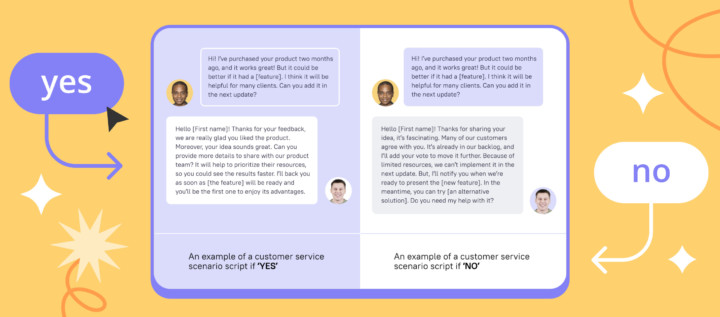A Comprehensive Guide to Customer-Led Growth (CLG)

So you’ve encountered a term of Customer-Led Growth, or as we like to call it — CLG. If you’re just starting your journey into business growth strategies, you’re in for a treat! In this guide, we’ll unravel the magic behind CLG, a strategy that champions customers as the main drivers of business growth.
We’ll delve into why CLG is a game-changer, how it stacks up against other growth strategies, and the unique advantages it offers. We’ll also paint a real-world picture of CLG through company examples and provide a step-by-step blueprint to craft your customer-led growth strategy.
What is CLG?
So what is customer led growth?
Often abbreviated as CLG, it’s a business strategy focused on driving growth by putting the customer at the forefront of all business decisions. In a CLG model, businesses prioritize understanding their customers’ needs, behaviors, and expectations, then leverage this knowledge to deliver products, services, and experiences tailored to those customers.
This approach fosters stronger customer relationships, higher customer satisfaction, and ultimately, business growth loops.
Why CLG matters?
In an era where customers have more choices than ever, businesses must differentiate themselves to capture customer attention and loyalty. CLG provides that differentiation by ensuring businesses align their offerings with what customers truly want and need. Here are a few reasons why CLG is crucial:
- Enhanced Customer Experience: By focusing on customer needs, businesses can create a superior customer experience, leading to increased customer loyalty and advocacy.
- Increased Revenue: Satisfied customers are more likely to make repeat purchases, refer others, and expand their purchases, all contributing to business growth.
- Competitive Advantage: A customer-led approach can set a business apart from competitors, providing a unique selling proposition.
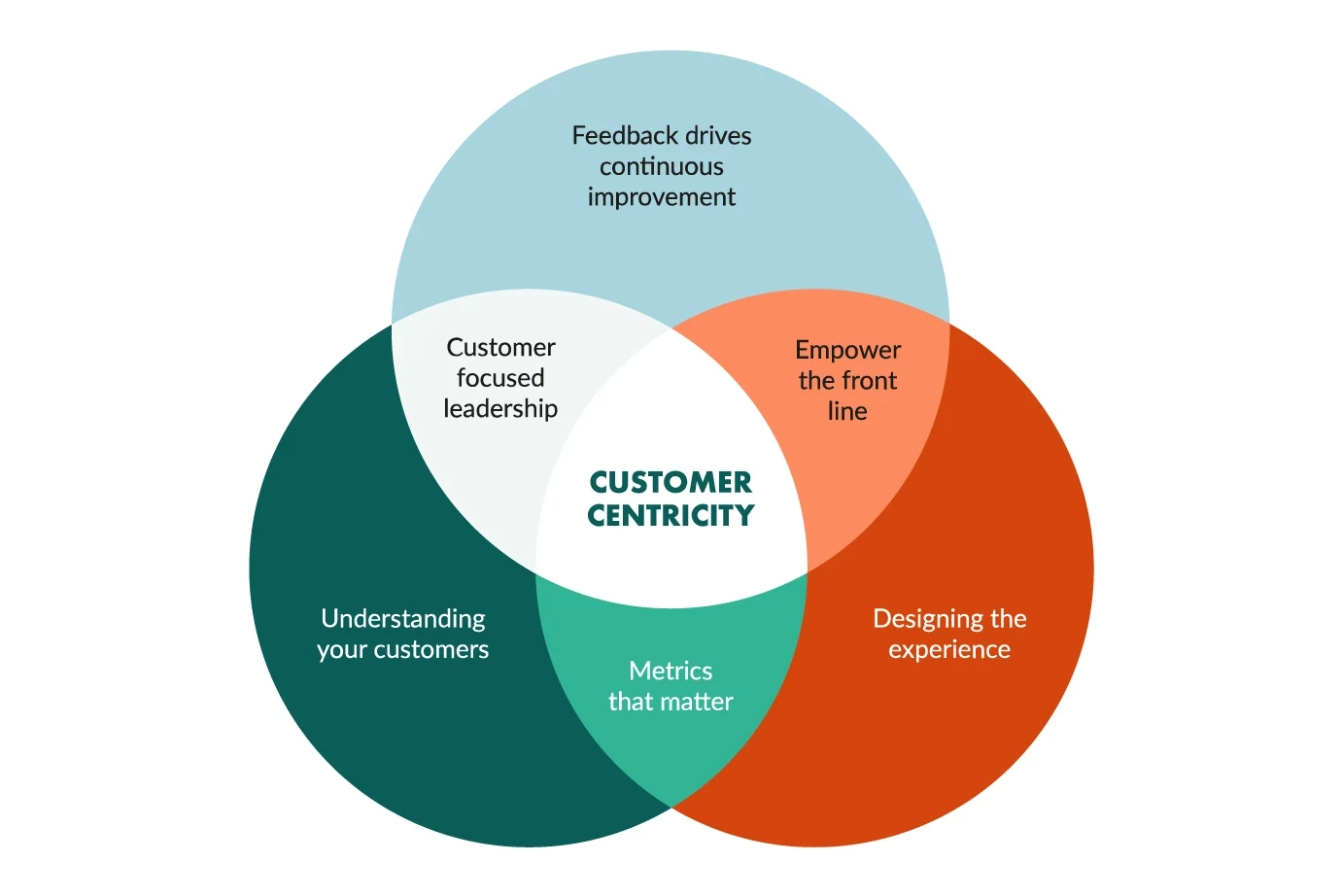
Check if your company is customer-centered using this Customer focus checklist from Dashly.
Other growth strategies
While Customer-Led Growth (CLG) has proven to be a potent strategy for many businesses, it’s important to acknowledge that it’s not the only approach to foster business growth.
Depending on a company’s unique circumstances and goals, other strategies like Sales-Led Growth, Product-Led Growth, and Marketing-Led Growth might be more suitable.
- Sales-Led Growth
This strategy is centered around expanding the customer base by employing aggressive sales tactics. This could involve a high-performing sales team that’s adept at closing deals or a strategic sales plan that includes targeting specific industries, niches, or customer segments. The core idea is to focus on increasing the quantity of sales, often through direct selling efforts, whether that’s in-person, over the phone, or through digital channels. The success of a sales-led strategy largely depends on the capabilities of the sales team and the effectiveness of the sales process.
PLG is a business methodology in which the product itself serves as the primary driver of customer acquisition, conversion, and expansion. This strategy banks on the premise that if your business growth experts create a truly exceptional product that fulfills a vital need or solves a significant problem for customers, then the product will, to a degree, sell itself. This approach requires a deep understanding of the customer’s pain points and the ability to develop and iteratively improve a product that not only meets but exceeds customer expectations. Companies like Slack and Dropbox are great examples of businesses that have grown predominantly through a product-led strategy.
This is a strategy driven primarily by marketing efforts. The objective here is to create visibility and awareness for the business, its products, or services to attract and convert potential customers. This could be achieved through a wide array of marketing channels and tactics, such as digital marketing, content marketing, SEO, social media marketing, public relations, and more. A successful marketing-led growth strategy requires a deep understanding of your target audience, effective messaging, and the ability to choose and utilize the right marketing channels to reach your audience.
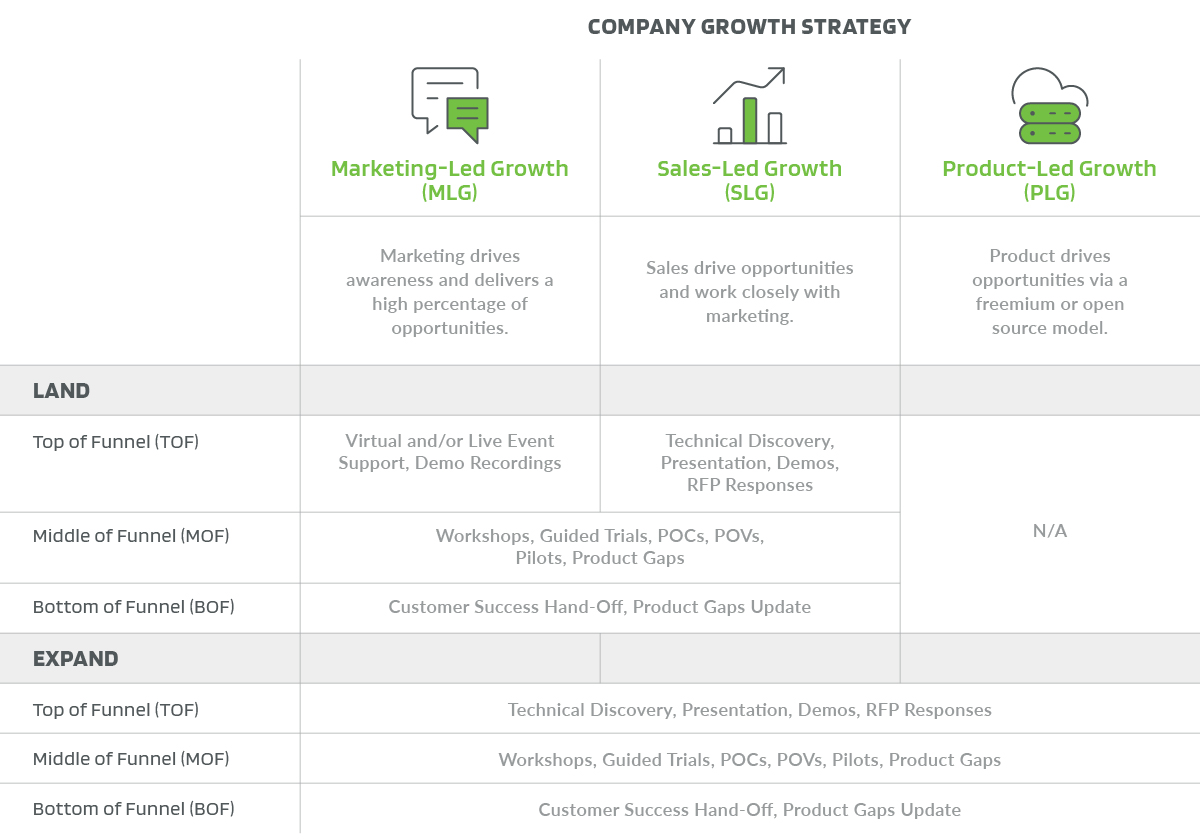
Each of these strategies comes with its own set of strengths, weaknesses, and considerations. The best choice depends on a variety of factors, such as the nature of your business, your target audience, your business goals, and more. It’s also worth mentioning that these strategies are not mutually exclusive — many successful businesses employ a mix of these strategies for optimal growth.
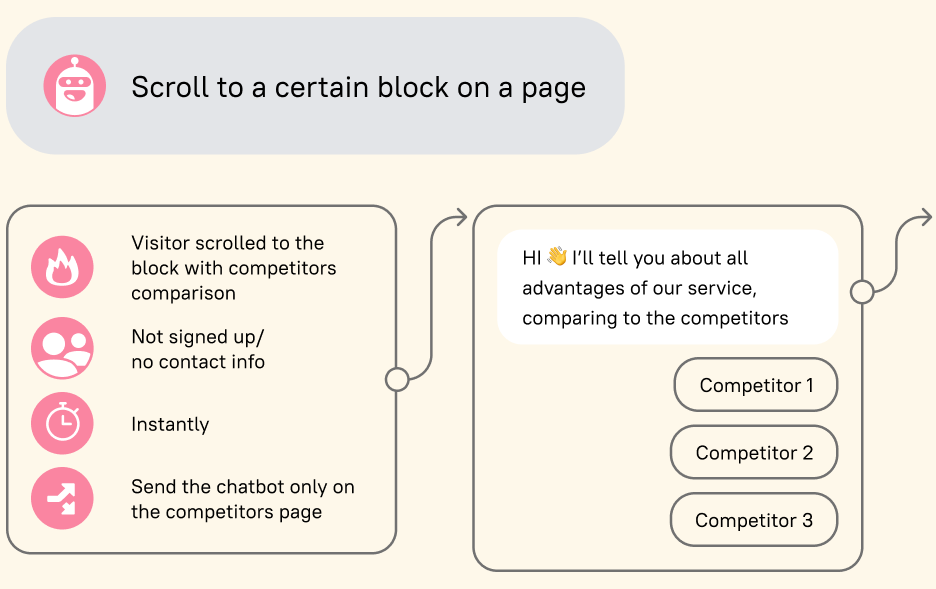
Get your free example of a growth marketing playbook with 40+ templates for successful CLG experiments
Why businesses choose CLG
Businesses are increasingly turning to CLG because of its potential for sustainable, long-term growth. Unlike sales or marketing-led strategies, which can be more transactional, CLG focuses on building deeper relationships with customers. This can lead to higher customer retention rates, more repeat business, and stronger word-of-mouth referrals. Additionally, by understanding and meeting customer needs, businesses can create products and services more likely to succeed in the marketplace.
Examples of CLG
A number of highly successful companies have harnessed the power of Customer-Led Growth (CLG) strategies to drive their business growth and stay ahead of the competition. These companies serve as excellent examples of how putting customers at the heart of business decisions can lead to remarkable success.
Amazon, the world’s largest online retailer, is a classic example of a company that thrives on a CLG strategy. Their principle of ‘customer obsession’ is not just a buzzword, but a fundamental tenet of their business model. Amazon tirelessly works towards understanding their customers’ needs and pain points, and continuously iterates and innovates based on these insights. This customer-first approach has led to ground-breaking innovations such as one-click ordering, which simplifies the purchasing process, and Amazon Prime, a subscription service that offers a host of benefits including expedited shipping, streaming services, and more. By consistently delivering on customer needs and expectations, Amazon has cemented its position as a global e-commerce leader.
Apple is yet another company that has effectively leveraged a CLG strategy. Apple’s success lies in its deep understanding of its customers’ desire for innovative, intuitive, and aesthetically pleasing technology products. This understanding has led to the creation of game-changing products such as the iPhone, iPad, and MacBook, which have not only met but often exceeded customer expectations, cementing Apple’s position as a leader in the tech industry.
Netflix, a leading streaming service, is another company that has capitalized on CLG. Netflix closely observes its viewers’ watching patterns and preferences, and then uses this data to make decisions about what content to produce or license. This has led to the creation of hugely popular shows like “Stranger Things” and “The Crown,” which were informed by viewer preferences and data. In addition, Netflix’s recommendation algorithm, which suggests shows and movies based on a user’s viewing history, further exemplifies their commitment to a customer-led approach. This is a great example of a growth marketing strategy template that has resulted in high viewer engagement and a rapidly growing subscriber base.

In each of these examples, the CLG strategy has enabled these businesses to build strong, sustainable relationships with their customers, foster customer loyalty, and drive significant business growth.
Building a customer-led growth strategy step by step
Creating a robust Customer-Led Growth (CLG) strategy is a multi-step process that requires deliberate planning and execution.
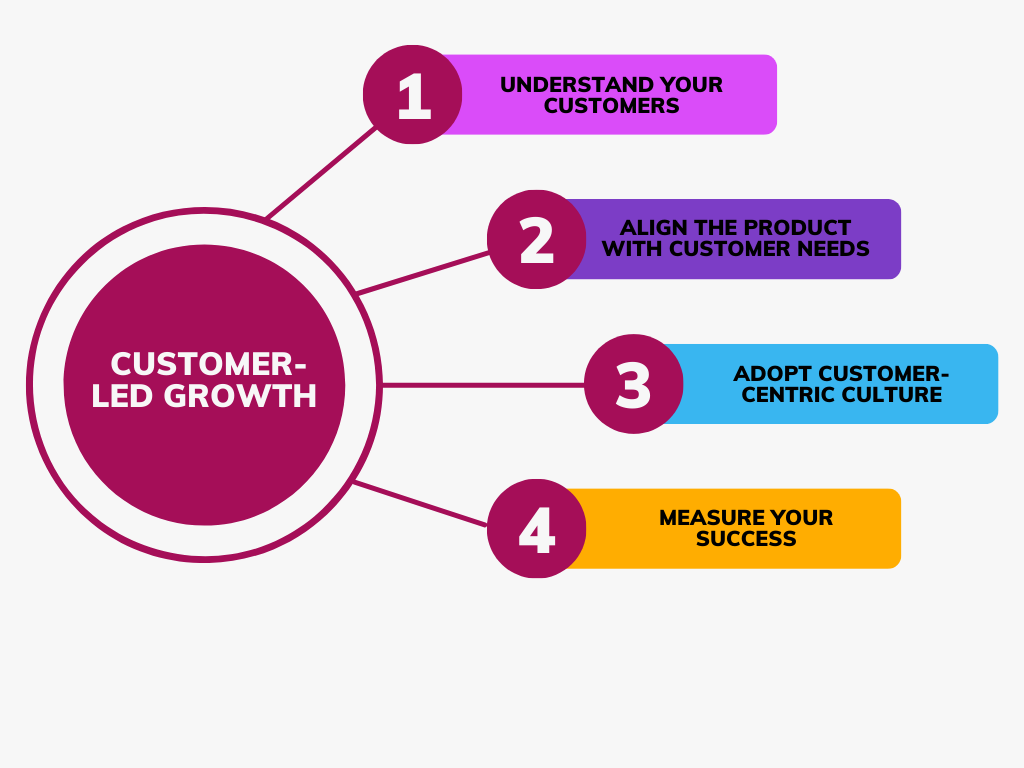
Here’s a more detailed breakdown of the crucial steps involved:
Understand Your Customers
The first and most critical step in building a CLG strategy is to deeply understand your customers. This involves more than just knowing who they are; it’s about understanding their needs, preferences, behaviors, and motivations. To achieve this, consider employing a variety of research methods:
Surveys: These can help gather quantitative data about customers’ preferences, attitudes, and satisfaction levels. They are useful for reaching a larger audience and can be conducted online, over the phone, or in person.
Interviews: These provide qualitative data and deeper insights into customers’ thoughts and feelings. They can be conducted face-to-face, over the phone, or via video conferencing.
Growth Marketing Analytics: This involves analyzing customer data collected from various touchpoints like websites, social media, customer service interactions, and more. It can provide valuable insights into customer behaviors, preferences, and trends.
Read also: A secret collection of growth marketing services Dashly team uses daily
Free expert insights to boost your marketing strategy and raise conversion to a target action by 10%
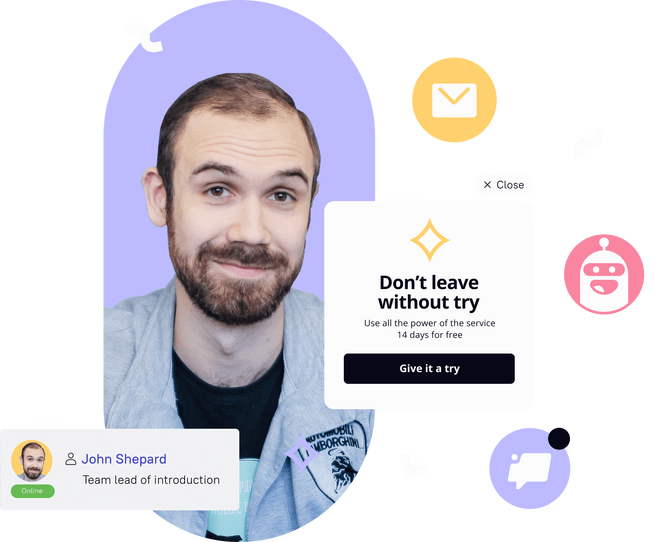
Align Your Offerings
Once you’ve gained a deep understanding of your customers, the next step is to tailor your products, services, and experiences to meet their needs:
Products: Ensure your product features, benefits, and pricing match the needs and expectations of your customers.
Services: Your customer service should be top-notch, resolving issues quickly and effectively while providing a positive customer experience.
Experiences: The customer experience should be seamless and enjoyable across all touchpoints, from the first point of contact through to post-purchase follow-up.
Foster a Customer-Centric Culture
Building a customer-led growth strategy isn’t just about external changes; it also involves fostering a customer-centric culture internally:
Leadership: Leaders should drive the customer-first philosophy, setting the tone for the rest of the organization.
Training: Provide training to all employees, not just those in customer-facing roles, to ensure they understand the importance of putting customers first. If needed, you should also invest in mentoring to further foster a customer-centric mindset across the organization. By using mentoring software, you can facilitate structured and effective mentorship programs that promote the principles of customer-centricity.
Communication: Regularly share customer feedback and insights with the entire organization, so everyone understands the customers’ perspective and can make informed decisions.
Measure Success
Finally, it’s essential for a growth marketing team to track the success of your CLG strategy over time:
Customer Satisfaction: Product metrics framework that include Net Promoter Score (NPS) or Customer Satisfaction Score (CSAT) can help measure how satisfied customers are with your products or services.
Retention: Monitor customer retention rates to see if customers continue to do business with you over time.
Lifetime Value: Calculate Customer Lifetime Value (CLTV) to understand the total worth of a customer to your business over the entirety of their relationship with you.
Remember, building a successful CLG strategy is an ongoing process that requires continuous learning, high-quality growth marketing tools, and adjustment. The more you understand your customers and align your offerings with their needs, the more effective your strategy will be.
In our blog you can find more tips on how to create a marketing growth strategy of your liking.
Thanks! Here’s your copy of the growth strategy template

Customer-led growth books: some recommendations
To make you feel more at ease in this vast world of growth strategies, we’ve picked several books that could help you navigate it. Check them out when you have time 🙂
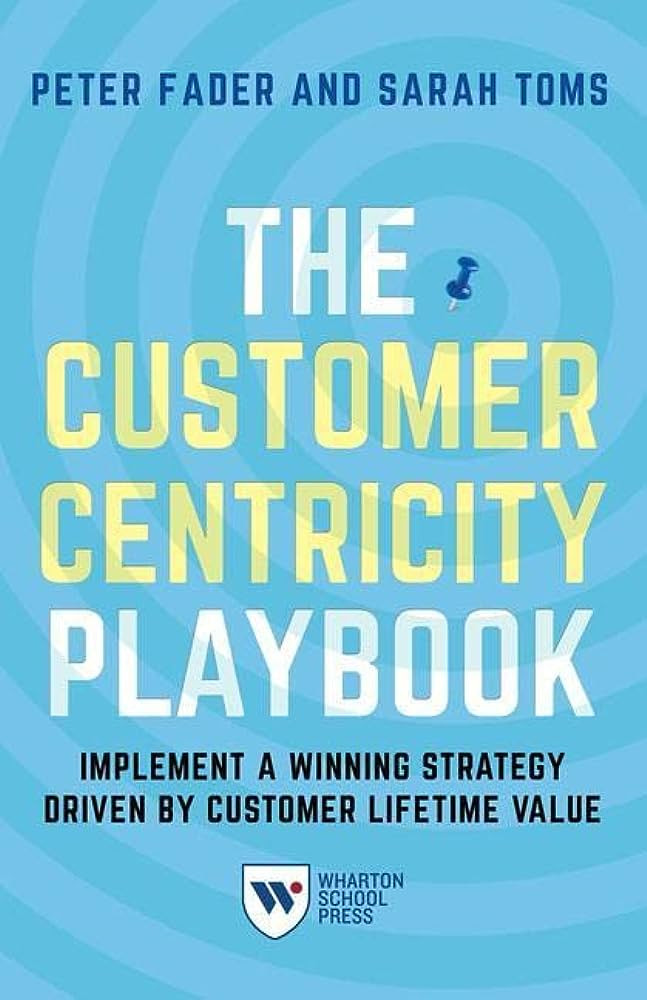
“The Customer Centricity Playbook: Implement a Winning Strategy Driven by Customer Lifetime Value” by Peter Fader and Sarah E. Toms
This customer-led growth book provides a comprehensive guide on how to develop and implement a successful customer-centric strategy in today’s business landscape. The authors share insights on how businesses can align their operations and decision-making processes around customer lifetime value.
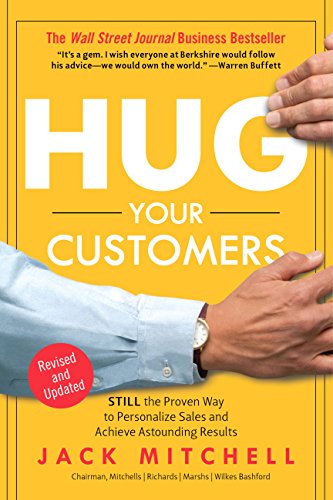
“Hug Your Customers: The Proven Way to Personalize Sales and Achieve Astounding Results” by Jack Mitchell
Mitchell shares his experiences in building a highly successful family business by focusing on personalized customer service. The book offers practical tips and techniques for understanding customer needs and delivering exceptional customer experiences.

“Outside In: The Power of Putting Customers at the Center of Your Business” by Harley Manning and Kerry Bodine
This book provides businesses with a roadmap for transforming their customer experience. The authors argue that putting customers at the center of your business can dramatically increase customer satisfaction, reduce churn and increase revenue.
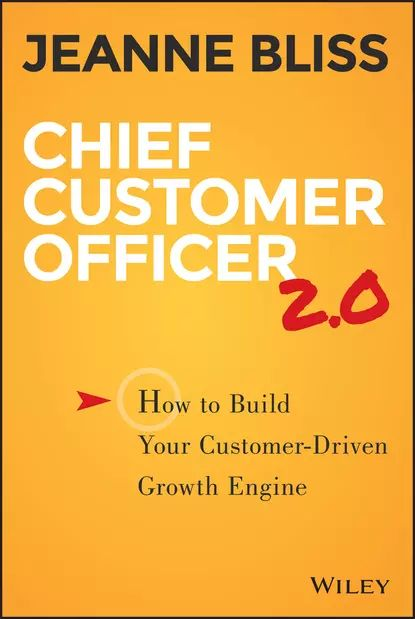
“Chief Customer Officer 2.0: How to Build Your Customer-Driven Growth Engine” by Jeanne Bliss
Bliss offers a practical guide on how to embed customer-focused thinking into every facet of your company. This book is a must-read for anyone looking to drive growth by improving customer experiences.
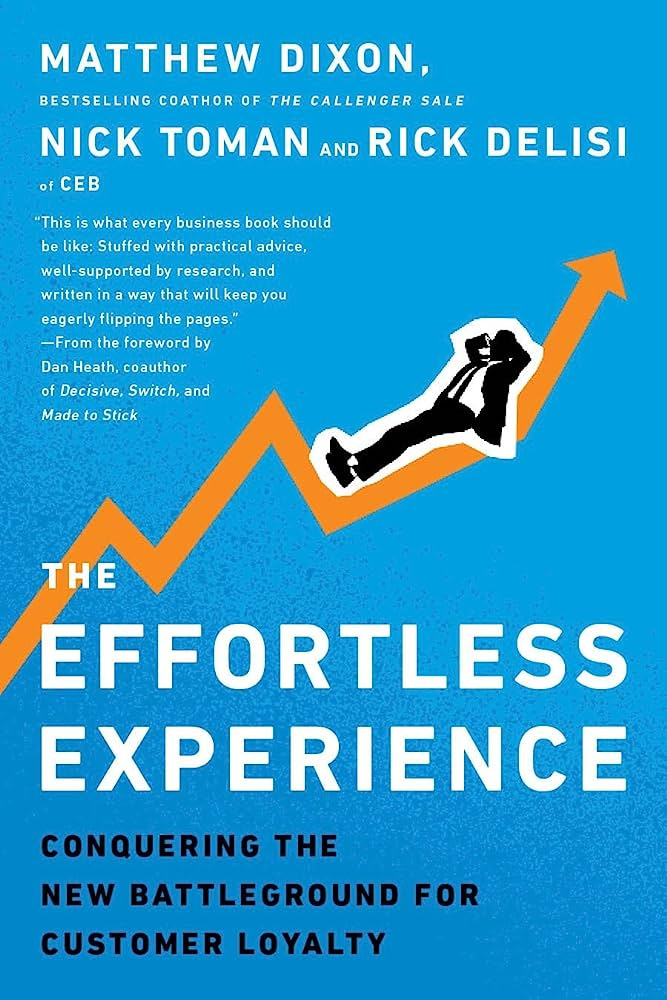
“The Effortless Experience: Conquering the New Battleground for Customer Loyalty” by Matthew Dixon, Nick Toman, and Rick DeLisi
This book challenges the belief that the best way to win customer loyalty is to “delight” them, arguing instead that the key is to make their experiences with your business as effortless as possible.
Want more food for thought? Check out Dashly’s recommendations on growth hacking books.
Thanks! Here’s your list of must-read books on growth hacking
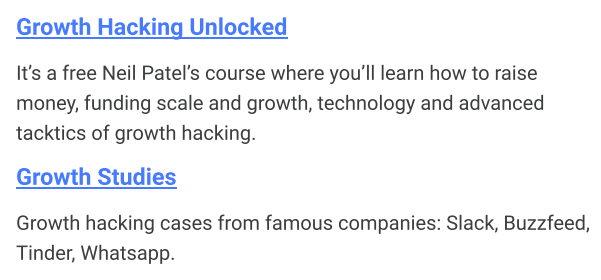
Wrapping up
CLG approach presents a powerful avenue for businesses looking to build sustainable, long-term growth. By putting customers at the heart of all decision-making, companies can foster stronger relationships, enhance customer experiences, and ultimately, drive business growth. While other strategies like sales-led, product-led, or marketing-led growth have their merits, the CLG approach brings a unique focus on customer needs and expectations.
Embracing a CLG strategy may be the change your business needs to set itself apart, increase its revenue, and achieve unparalleled success in today’s competitive landscape. Remember, the customer is king, and a business that serves its king well is well on its path to a prosperous future.
FAQ
What is Customer-Led Growth (CLG)?
Customer-Led Growth (CLG) is a business strategy that focuses on aligning business decisions and offerings to customer needs and expectations. The aim is to improve the customer experience, build stronger customer relationships, and subsequently drive business growth.
How is CLG different from other growth strategies?
Unlike other strategies like sales-led, product-led, or marketing-led growth that focus on driving growth through aggressive sales, product innovation, or marketing efforts respectively, CLG puts the customer at the forefront. The emphasis is on understanding and meeting customer needs to drive growth.
Why is CLG important for businesses?
CLG is crucial because it leads to enhanced customer experiences, increased customer loyalty and advocacy, higher revenue, and a unique competitive edge. This focus on customer satisfaction can lead to sustainable, long-term growth.
Can you provide examples of companies that use CLG?
Companies like Amazon and Apple are known for their customer-led growth strategies. Amazon’s customer obsession leads to innovations that meet customer needs, while Apple’s focus on intuitive, well-designed products reflects their understanding of their customers’ needs.
How can a business build a CLG strategy?
Building a CLG strategy involves understanding your customers’ needs, aligning your offerings to these needs, fostering a customer-centric culture across your organization, and measuring your success using appropriate metrics such as customer satisfaction and retention rates.
Thanks! Insights and updates are on their way 💌
Read also:
- 25 Growth Marketing Books to Skyrocket Success
- 22 SaaS growth hack Facebook tactics to boost your business
- Skyrocket your company revenue with a complete guide to RevOps Revenue Operations
- RevOps vs Sales Ops: know the difference
- B2B growth marketing: accelerating business success
- Demand Generation vs Growth Marketing: Where to focus?
- Growth marketing vs performance marketing: what to choose for your business
- Growth marketing newsletter: 18 expert digests for regular insights
- Growth marketing case studies: 12 stories with detailed tactics and numbers achieved
- RevOps best practices: 13 tactics to implement this year
- Top 10 product led growth software your competitors use in 2023
- 10 product led growth companies that boost their development right now
- Growth marketing framework: Battle-tested insights from Dashly experts
- Growth Product Manager: Charting new frontiers in product scaling
- 20 product led growth examples to inspire your team [expert edition]


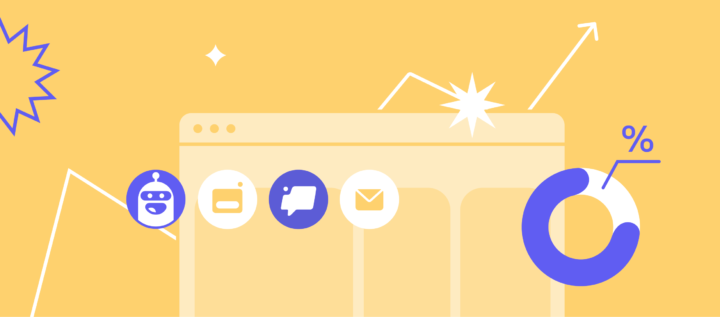
![Ultimate guide to creating a successful marketing growth strategy in 2023 [6 real-life examples]](https://www.dashly.io/blog/wp-content/uploads/2023/05/Expert-guide-to-creating-marketing-growth-strategy-6-examples-720x317.png)
